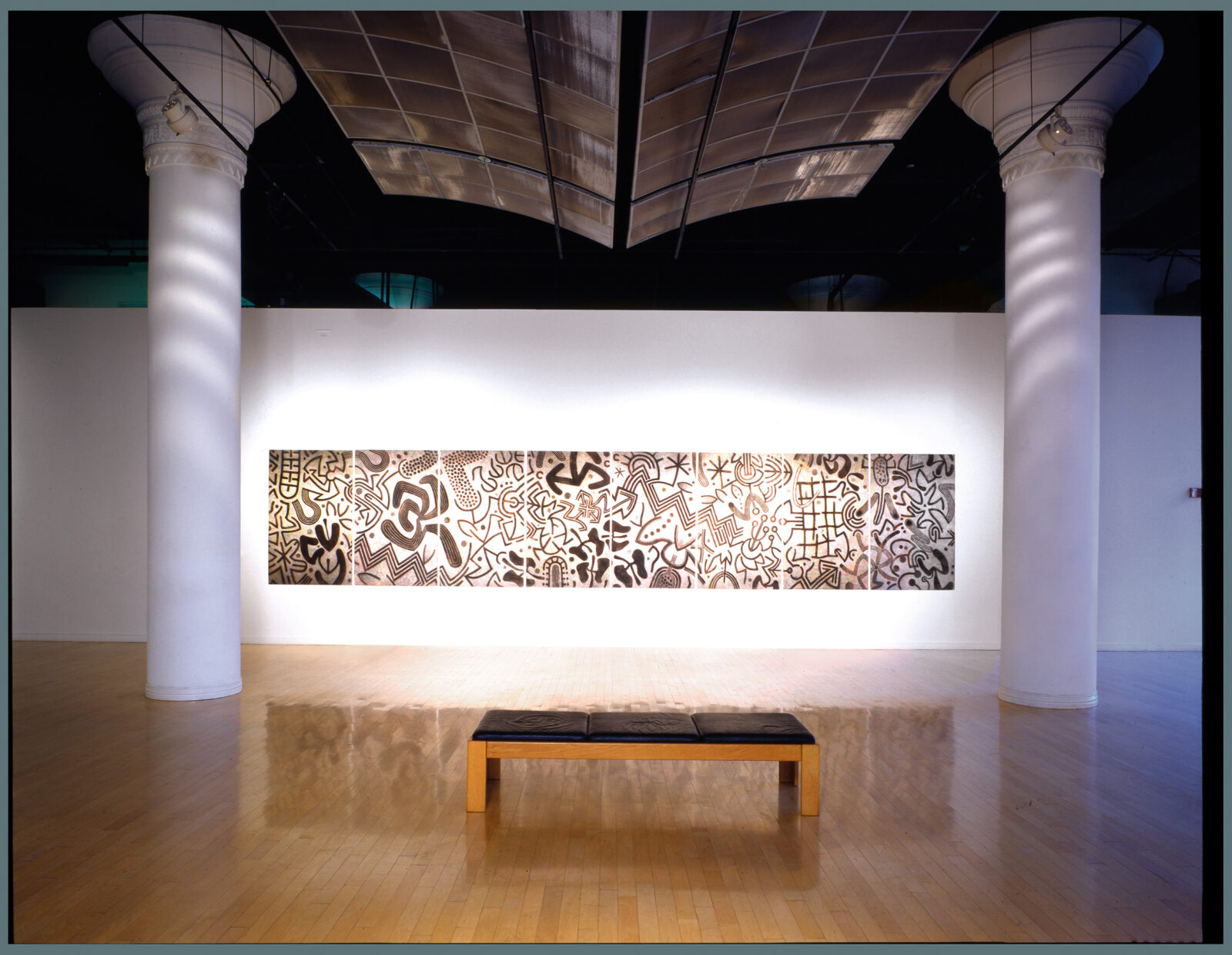There is a grand pantheon of artists, great and minor, famous and less well known, who have used Fabriano’s papers for centuries, all over the world. There could never be enough space here to name them all but be assured that the impressive list includes Michelangelo (1475-1564), Giovanni Battista Piranesi, Sonia Delaunay (1895-1979), Georgia O’Keeffe, Giorgio Morandi (1890-1964), Elisabeth Frink, John Cage (1912-92), Federico Fellini (1920-93), Frank Auerbach (b. 1931), Bridget Riley and Keith Haring. Glancing down even a brief selection – not to mention vital contemporary figures such as William Kentridge and Glenn Ligon – evinces a dizzying kaleidoscope of line, form and colour, a stimulating array of visual and conceptual styles and approaches.
Tom Phillips RA (b. 1937) is a painter, printmaker and collagist, and a key figure in British art of the past half-century. He is influential and much liked among both artists and designers for the wide-ranging intelligence and erudite humour of his vast body of work. His practice has embraced many forms and genres, including book art (A Humument), portraiture (Iris Murdoch, Brian Eno), sculpture, printmaking, conceptual art and graphic music notation. He had acclaim as an experimental composer before he established himself as a painter and he was a judge on the Booker Prize in 2017. His opera Irma was recently revived at the South London Gallery in London.
Yet Phillips is completely committed to drawing and painting, making new work every day of every year. Nearly every room of his south London house is a kind of studio, piled high with work in progress of all kinds – for an artist like Phillips, there is little division between art and life.
Phillips is a longstanding enthusiast for Fabriano paper. ‘I’ve used it for years,’ he says. ‘My assistant used to get big rolls and cut it down. I’m not a “fancy paper” person normally, but Fabriano is my standby paper. For watercolours I use those Fabriano blocks.’
Phillips used the paper for one of his best known works, the enormous (175 cm × 870 cm) Rima’s Wall, drawn with charcoal (conté) and pastel on eight sheets of paper. The completed work was too wide for his home studio. ‘The biggest drawing I ever did is on Fabriano. It’s my best drawing. Rima is an anagram of Irma. It’s very strong paper, with a good tooth,’ says Phillips. ‘However much you rub out, it doesn’t go into holes. It even withstands my old friend Frank Auerbach, however hard he scratches and digs into the paper!’
Rima’s Wall is now in the collection of Francesca and Massimo Valsecchi and on permanent display at their Palazzo Butera in Palermo.






